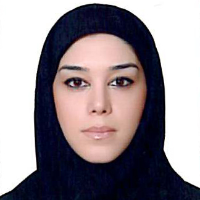Contemporary Western Volumetric Works Approaches and Features(Case Study from 1980 to Present)
Having started decades ago, what is transpiring in the sculpture sphere is of such a varied, plural, uncanny, and paradoxical nature. This goes insofar as not only is it impossible to tell genuine from the impure, but also it is not easily possible to trace attributes shared by all the phenomena and then to define the contemporary sculpture or to outline a certain value or hierarchy system for it. The only term that can be safely used today to describe works of sculpture is “uncertainty”. Featuring scattered, relative, personalized, commercialized, market-oriented aesthetics, post modernism is an art form of altered functions whose nature and identity are constantly changing. Definition of the essential and the art is not possible anymore. In other words, concepts like centralized aesthetics, purity, consonance, harmony, coherence, and ideal beauty have all been faced with disagreement in the temporary art, and this issue is in direct connection with today’s sculpture works. Nowadays, the term “sculpture” encompasses a much wider span of works. In fact, upon the emergence of post modernism, all the criteria that were once the essential conditions of a sculpture, like solidity, uniqueness, being an object and being bound to a particular location for display purpose, were deemed unnecessary. What is transpiring in the sculpture sphere today is so varied and paradoxical nature that it is impossible to trace attributes shared by all the phenomena. The present study is an attempt to identify the approaches prevailing in sculpture since 1980, and to analyze the theoretical foundations and intellectual origins of such approaches as well as the expressive forms and implicit concepts of contemporary sculpture. The main questions are the following: What approaches does contemporary western sculpture advocate? What are the fundamental principles and attributes of the approaches in question? What are the similarities and differences between these approaches? The main objective of this study is to examine the main characteristics and developments of the contemporary sculptural approaches in order to reach an integrated order of this category. This would in turn help with the extraction of features to achieve a unified viewpoint regarding the contemporary sculpture. Thus, given that the features of postmodern art have not yet been organized as for their influence in the contemporary sculpture, it is deemed necessary to probe into the issue. The reason is contemporary pieces of sculpture attempt to break away from the arbitrary boundaries set in the modern era. They are not willing to surrender to the purism and feigned confines of the modern era. This is why contemporary sculpture is defined in a far wider domain, and is more varied in the material, techniques, methods, etc. Therefore, it would be of help to identify and outline those features used to distinguish the works of contemporary sculptors from those previous eras and especially modern epoch. This way, a more profound evaluation of this art form would be feasible. A descriptive-analytical approach has been employed to analyze the form and content of sculpture from 1980 to 2000. To this end, the author has introduced the works of prominent sculptors of the mentioned period in the categories of 1.Figuration 2.Abstraction 3.Objectivity and 4.Place-structuralism. Characteristics of each approach are then analyzed.Findings of the research indicate that contemporary sculptors adopt resort to a variety of approaches and work with certain concepts and ambiance to express the fundamental assumptions and experiences of the time. They aim at elimination the extant general sensitivity towards the function of sculpture and redefining this function. The inclusive focus of their works on various approaches doubts the artistic, modern self-sufficient pieces of sculpture once appreciated as a “sublime” commodity. They employ different sculptural approaches to reflect dynamic experiences which are often mysterious, and feature narrative qualities and allegorical and personal expressions. All in all, "pluralism" in the application of fuzzy and heterogeneous methods, "eclecticism" in the combination of various materials and objects, and "text extroversion" of the work as a platform for the artist to present their desired content and concept, and “individualism” evident in the use of the artist’s personal style and self-awareness are the highlights of contemporary sculptural creations. Eventually, being “subject-oriented” was recognized as the common point shared by all the aforesaid approaches.This would per se bring about plurality in the form and concepts, eliminate hierarchies, put the content before the form, communicate a message, consider the issues of the day, apply new media and advanced technologies in the creation of items, widen the cultural span emerging in the works, address more general audience, and bring new media into the platform of sculpture in the form of installation art, architectural sculptures, etc., which would eventually alter the modernist definitions of sculpture. In fact, the notion of being “content-oriented” as the common point of all contemporary sculpture styles makes it possible for the sculptor to find inspirations in their immediate environment and express national and racial issues, boundaries, and social norms in the form of their individual concerns. Thus, racial, cultural, religious, and sexual minorities are using sculpture as a tool to voice their beliefs and to showcase their constraints. Consequently, given the plurality of the perspectives ahead, the contemporary sculpture is going through varied experimentalism in order to reach a novel expression.
-
Explaining Components of Architectural Aesthetics Based on Humans’ Experience(Case Study: Prominent Cultural Buildings in Tehran)
, Behnaz Aminzadeh Gohar Rizi *
Bagh-e Nazar,


